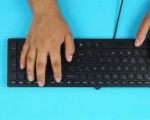How to Configure BIOS for Booting from a USB Flash Drive: A Step-by-Step Guide
- 1. Understanding BIOS and Its Role in Booting
- 2. Why You Might Want to Boot from a USB Flash Drive
- 3. How to Access Your BIOS Settings
- 4. Configuring BIOS for Booting from a USB Flash Drive
- 5. Troubleshooting Common Issues with USB Booting
1. Understanding BIOS and Its Role in Booting
The BIOS (Basic Input/Output System) is a critical component of your computer’s startup process. It is a firmware that initializes hardware during boot and provides runtime services for operating systems and programs. The BIOS is responsible for loading the operating system from your hard drive or other bootable devices. Configuring your BIOS correctly is essential for ensuring that your system boots from the right device, whether it's a hard drive, CD, or USB flash drive.
When you boot your computer, the BIOS checks the available devices and loads the bootloader from the first available device in the boot priority list. By configuring BIOS settings, you can change the boot order to prioritize USB devices, enabling you to boot from a USB flash drive.
2. Why You Might Want to Boot from a USB Flash Drive
Booting from a USB flash drive offers several advantages, especially for tech enthusiasts and those troubleshooting or installing a new operating system. Here are a few reasons why you might want to boot from a USB flash drive:
- Install or Reinstall Operating Systems: You can create a bootable USB drive with installation files for Windows, Linux, or macOS, which makes it easier to install or reinstall an OS on your system.
- Troubleshoot and Repair: If your system is not booting correctly, booting from a USB drive with diagnostic or recovery tools can help you troubleshoot and fix issues.
- Run Portable Operating Systems: A USB drive can also be used to run portable versions of operating systems, allowing you to use your preferred OS on any compatible computer without installation.
3. How to Access Your BIOS Settings
Before you can configure BIOS for booting from a USB flash drive, you need to access the BIOS setup menu. Here’s how to do it:
- Turn Off Your Computer: Ensure that your computer is completely powered off.
- Power On Your Computer: As soon as you power on the computer, immediately start pressing the BIOS key. Common keys include F2, F10, Delete, or Esc. The exact key varies depending on your computer’s manufacturer, so look for a prompt on the screen or consult your user manual.
- Enter BIOS Setup: After pressing the correct key, you should enter the BIOS setup menu, where you can adjust various settings.
4. Configuring BIOS for Booting from a USB Flash Drive
Once you’re in the BIOS setup, you’ll need to adjust the boot order to prioritize booting from a USB flash drive. Follow these steps:
- Navigate to Boot Options: Use the arrow keys to navigate through the BIOS menu. Look for a section called “Boot,” “Boot Order,” or “Boot Priority.” This is where you’ll change the boot sequence.
- Change the Boot Order: In the Boot menu, you should see a list of devices, such as your hard drive, CD/DVD drive, and USB drives. Move the USB drive to the top of the list using the indicated keys (usually + or - or Enter and arrow keys).
- Save and Exit: Once you’ve set the USB flash drive as the first boot device, save the changes and exit the BIOS. This is usually done by pressing F10, confirming the changes, and rebooting your computer.
Now, your computer will boot from the USB flash drive when it is inserted, and you can proceed with the installation or troubleshooting process.
5. Troubleshooting Common Issues with USB Booting
Sometimes, despite configuring BIOS correctly, you may encounter issues when trying to boot from a USB drive. Here are some common problems and how to troubleshoot them:
- USB Drive Not Recognized: Ensure that your USB drive is properly formatted as a bootable device. You can use tools like Rufus or the Windows Media Creation Tool to create a bootable USB drive. Also, try using different USB ports, preferably USB 2.0 ports if your computer supports it.
- Incorrect Boot Order: Double-check that the USB drive is set as the first boot device in the BIOS. Sometimes, the changes don’t take effect unless you save them correctly and exit the BIOS.
- Legacy vs UEFI Mode: Some systems may require changing the BIOS mode from UEFI to Legacy Boot (or vice versa) to boot from a USB. Look for these options in the Boot or Boot Mode settings within BIOS.
- USB Drive Compatibility: If the USB flash drive is not booting, ensure it is compatible with the BIOS. Some older systems may not support USB booting, or they may only recognize specific types of USB drives.
By following these steps and tips, you can ensure a smooth experience when booting from a USB flash drive. If you continue to face issues, check for BIOS updates from your motherboard manufacturer, as these may resolve compatibility problems.





























